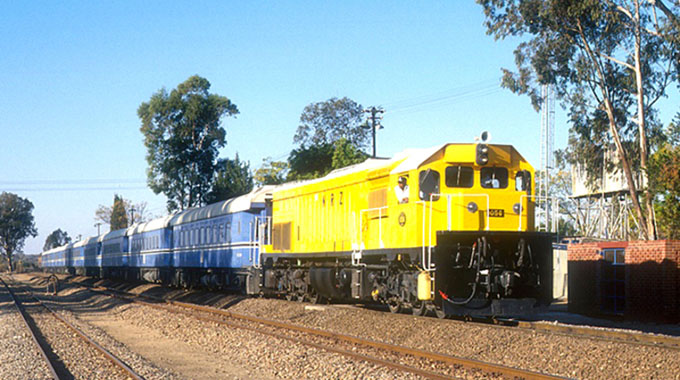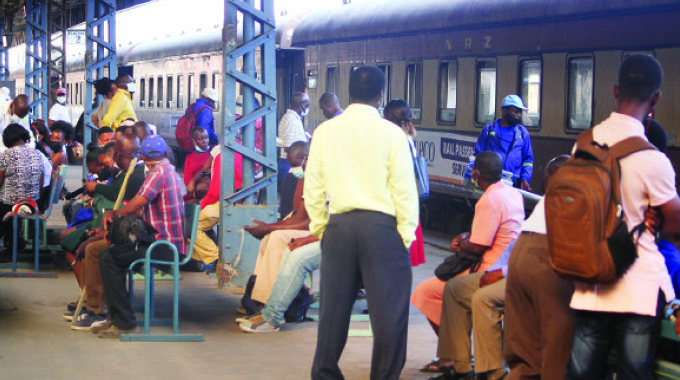EDITORIAL COMMENT : Train service first step to integrated public transport

The reintroduction of limited commuter rail services in Harare is an idea whose time has come, and this time it will probably work since we are also seeing the initial stage of a future integrated public transport system with Zupco planning to have buses to take passengers from where the train stops on the outer edges of suburbs deep into the residential areas.
The critical decision was to set up the single ticket, at the price of a bus fare, for the combined journey by feeder bus and train. This makes the train a real option, rather than something reserved for people able to walk several kilometres.
For example, the eastern route to Ruwa will largely serve people in that growing town of more than 40 000 people plus Mabvuku and Tafara. But the line runs to the south of Mutare Road and the housing runs well to the north. Someone in New Tafara does not need a 5km stroll to and from Mabvuku siding.
The main western route to Mufakose serves the heavy industrial sites, with the line running between Workington and Southerton, and then continues to Mufakose, although we need to remember that Buduriro and Mufakose, two huge suburban areas, are divided by that railway and if the service is going to be useful Zupco need bus services on both sides of the railway.
Even the third service to Tynwald, on the northern branch line that leaves the main line at Aspindale, is advertised as useful for Warren Park, but that only makes sense for most people in that suburb, those on the eastern side of the hills, if there is a good feeder bus service.
The original attempt for a rail service, even a limited one at peak hours, collapsed because as with so much at that stage of the First Republic it was cobbled together without any thought being given to the people who would actually opt to travel by train. This time round a great deal more thought has been given to what is needed, hence the single ticket rail-bus journey.
It will probably take time to become popular, with many people wanting to see how it works so Zupco and the National Railways of Zimbabwe will need to persist and make adjustments as they go along. The evening times, for example, do not appear to take into account of the curfews and the limited working hours, but may have been set on the supposition that with the third wave almost over these will be adjusted.
A second factor is the limited number of stops. Admittedly the infrastructure is not in place in many places for passengers to get on and off the train. But to make the service convenient for more people more intermittent stops, especially in the industrial areas, appear to be needed. Msasa is not on the list of stops, probably because of the cutting the railway runs through as it climbs to the east and the lack of access to the line. But there is a possibility near the old tobacco factory. Ruwa could easily accommodate a couple more stops.
But the main point is that this time the authorities are looking at resuming the service as part of an integrated transport plan. So long as Zupco and the railways listen very carefully to passengers, adjust where needed and do their best to make it work properly, it will grow.
There are other considerations. One is security. The rail reserves have tended to attract some of the less desirable people, criminals to be precise. While the present stops have been chosen where it is easy to bring up buses, some people who will use the service live or work close to the line.
So cutting grass and shrubs and having modest police patrols will help. This will be more important as more stops are put in place.
But from this small beginning both Zupco and the National Railways of Zimbabwe need to keep Vision 2030 clear in their minds. Over the next decade Zimbabwe will see a lot of economic growth. People already talk about the congestion of the road system, and when most families can afford a car the congestion will be gridlock unless there is a middle-income public transport service available.
All major cities around the world rely on most people, right up to chief executives, using public transport because it is quicker and more convenient.
If you visit the commuter towns surrounding London, for example, you will see huge car parks at the railway stations as so many drive to the station and then take the train to work.
Vision 2030 demands something a lot more sophisticated than the basic return of Zupco and now the start of the limited peak hour rail services and the planners need to start work now so as the bits are added they are the right bits.
For a start the problem of bus terminuses needs to be addressed. Either they are far from most working places and other terminuses, such as the Simon Muzenda Street terminus, or they are miniature spaces right in the midst of congested streets. The long-term solution, especially with an integrated transport system, would be to redevelop the railway station and all the railway land to its west, as far as the top end of Seke Road, into a giant central transport complex where all trains and buses terminate and start their trips and where people can walk in a couple of minutes from the platforms to the buses. The railways can swop the land they hardly use for more land out Aspindale way.
Way back there were half-thought plans for a rail link to Chitungwiza. The concept was good but it needs to be resurrected and updated, and very probably seriously adjusted so the new development in southern Harare is taken into account. At the very least, as we sort out all the mess in land allocations, an adequate rail reserve needs to be set aside, and in the right place.
Even the stopping points for trains need to be upgraded, one day into proper suburban stations, again combined with proper bus terminuses. At the very least land needs to be set aside so these can be built and a lot of thought given to the placement and design.
We are at least this time starting out on the right foot, with integration from the start. But this is just the start. The planners and transport experts now need to sit down and start putting together the Vision 2030 plan and then start working on the detailed implementation over the next nine years so that when 2030 comes we do not have a permanent gridlock and a bunch of unconnected emergency solutions.
Rather we should have a public transport system that is the envy of Africa. So the present move to having rail services should not be seen as an emergency measure, but as the start of this process to make first class public transport a reality.











Comments